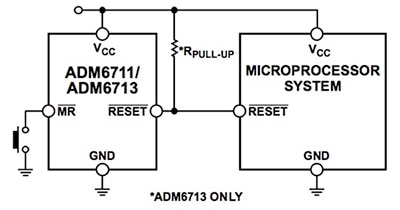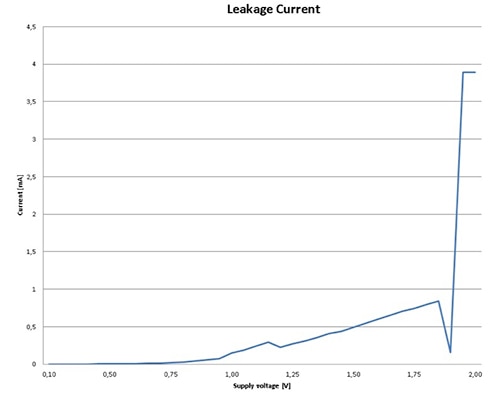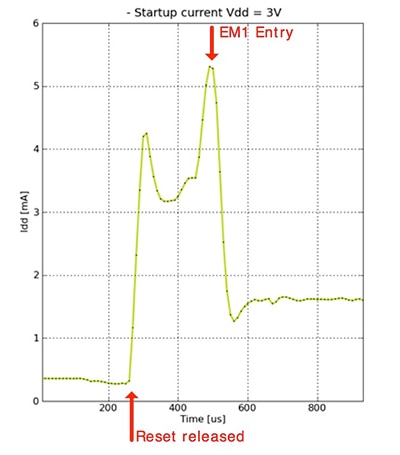Managing Power-On Sequence in Dormant Energy-Harvesting Designs
投稿人:电子产品
2015-04-29
Designs powered by ambient energy face unique challenges when deployed from long-term storage. With no available energy reserves, these designs must follow a careful sequence of powering up individual circuit elements, particularly devices such as microcontrollers (MCU) that can exhibit significant power demands during initialization. For engineers, successful power-up of MCU-based energy-harvesting designs from a “cold start” becomes easier with the application of a combination of voltage monitor and specialized energy-harvesting devices from manufacturers including Analog Devices, Linear Technology, Maxim Integrated, Microchip Technology, Silicon Labs, and Texas Instruments, among others.
For designs powered by ambient sources, fluctuating energy levels often dictate the use of energy-storage devices such as rechargeable batteries or supercapacitors to sustain nominal power availability through energy peaks and valleys. Yet, for an energy-harvesting design taken from storage or otherwise left without a source of energy for extended periods, few practical energy-storage devices will be able to retain sufficient charge during these periods to allow a rapid resumption of circuit operations. Consequently, designers will need to employ strategies designed to ensure the power-up process proceeds smoothly. In many cases, simply exposing a dormant circuit to its ambient power source will be insufficient to restore operation reliably. In fact, as power levels begin to rise, these designs must ensure that sufficient power is available to support proper initialization of power-hungry devices such as MCUs and wireless transceivers.
Power-on reset
For a line-powered design or one drawing power from a high-energy source, the finer details of circuit initialization are rarely an issue. Even with plenty of available power, however, circuits require careful sequencing to ensure that blocks needed by other elements are fully initialized and powered prior to use. In typical MCU-based designs, simple power-on reset ICs such as the Analog Devices ADM6711 and ADM6713, Microchip Technology TCM809, and Texas Instruments TLV803 provide power reset timing and voltage supervision for processors (Figure 1).

Figure 1: Power-on reset ICs such as the Analog Devices ADM6711 and ADM6713 provide simple solutions to power sequencing for MCUs. The ADM6711 features a push-pull output, eliminating the need for additional external components, while the ADM6713 provides an open-drain output requiring an external pull-up resistor and allowing connection to voltage levels higher than VCC. (Courtesy of Analog Devices)
Devices in this class typically monitor the supply voltage and provide a reset signal on power-up, power-down, and whenever the supply voltage falls below a preset threshold. These types of devices typically include a built-in delay of 100 – 200 ms before generating the reset signal to allow the supply voltage to stabilize before the processor restarts. Linear Technology’s LTC2935 extends these basic capabilities with additional capabilities, including an early warning power-fail output that signals when the supply drops to a threshold slightly above the final reset threshold value. Indeed, engineers can find voltage monitor ICs with a broad range of sophisticated power supervision capabilities.
For designs powered by low-energy ambient sources, however, ensuring reliable circuit activation from a cold start can require more involved approaches beyond the simple addition of power-on reset functionality. For example, even as the harvesting circuit works to accumulate sufficient energy, leakage currents, or sub-threshold circuit activation, complex devices such as MCUs can already be draining power, increasing the time required to reach threshold startup levels or in the worst case, preventing it entirely.
Power drain
In MCUs, internal circuitry involved in device startup can begin to activate well below the power-on threshold, resulting in a significant power drain even at this early stage (Figure 2). In non-harvesting applications, where the supply voltage is switched on rapidly, this current consumption barely registers as a blip in the power profile. In cold-starting energy-harvesting applications, however, where the supply voltage could rise very slowly, this current can become significant, even draining power faster than the harvesting circuit can extract energy from its ambient source. In this worst-case but plausible scenario, the system might never reach the power-on threshold.

Figure 2: Even in ultra-low-power MCUs, internal housekeeping circuitry begins to draw on power well before the supply reaches the power-on threshold -- potentially reducing an energy-harvesting design’s ability to cold start from low-energy ambient sources. This current profile shows current measurements taken from a Silicon Labs Tiny Gecko MCU as the supply approaches VDD. (Courtesy of Silicon Labs )
Furthermore, when the supply reaches the power-on threshold, the design needs to ensure that sufficient energy is available to sustain circuit elements through their power-initialization phase and into normal operation. Complex devices such as MCUs can exhibit relatively high power demand during power-on. For example, when unpowered for a long period of time, decoupling capacitors will be completely discharged. When the supply voltage is switched on, the decoupling capacitors will initially appear as a short circuit and the current flow will only be limited by the resistance and inductance in the power lines.
Beyond those transient effects, the initialization requirements of MCUs and other complex devices can result in significant power demands. For example, even when programmed to enter sleep mode immediately on power reset, the Silicon Labs Tiny Gecko MCU draws approximately 4 mA for 300 μs - the time required by the MCU to transition from power reset to its Energy Mode 1 (EM1) sleep state (Figure 3).

Figure 3: MCU startup power requirements can reach significant levels as the device brings up peripherals, memory, I/O buffers, and processor core circuitry. In this measurement of power required during startup, the Silicon Labs Tiny Gecko MCU draws approximately 4 mA for the 300 μs this fast processor requires to transition from power reset to its sleep state, EM1. (Courtesy of Silicon Labs)
To prevent the MCU from draining the harvested energy before an energy-storage device has built up enough reserves to safely power-up the MCU, a switch can be inserted between the harvesting circuit and the MCU. In fact, circuit designers can use voltage supervisor ICs such as those mentioned above to control the gate of a logic-level gated MOSFET switch used to uncouple the MCU from the supply rail until power reaches nominal levels.
Indeed, successful power-on sequencing in energy-harvesting designs depends critically on power accumulated in an energy-storage device such as a rechargeable cell or supercapacitor. Consequently, power output from the energy-harvesting subsystem typically is applied foremost to ensuring those devices are fully charged. For this function, specialized ICs, such as the Analog Devices ADP5090, Linear Technology LTC3331, Maxim Integrated MAX17710, and Texas Instruments BQ25570 provide an effective solution, combining energy-harvesting functionality with on-chip circuitry for charging lithium-ion cells or supercapacitors.
Conclusion
Bringing up an energy-harvesting design from a “cold start” requires careful attention to voltage levels and current capacity of accumulated energy. Without careful power sequencing of MCUs and other devices with large start-up power requirements, power harvested from ambient energy sources can be exhausted before the start-up sequence completes, even resulting in a recurring cycle of start-up attempt and failure. Using a combination of available power-on reset, voltage monitoring, and energy-storage charger ICs, engineers can ensure their designs reliably complete relatively complex power-on sequences while harvesting energy from even low-energy ambient sources.
For more information on the parts discussed in this article, use the links provided to access product information pages on the DigiKey website.
免责声明:各个作者和/或论坛参与者在本网站发表的观点、看法和意见不代表 DigiKey 的观点、看法和意见,也不代表 DigiKey 官方政策。









